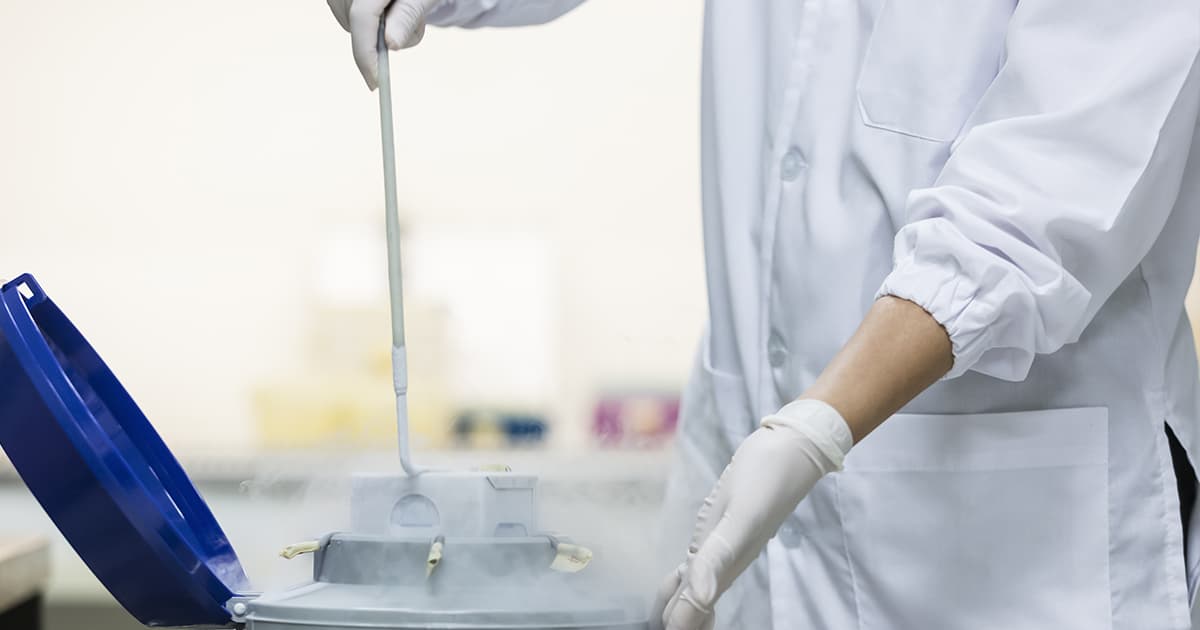Safe Nitrogen Handling

Liquid nitrogen is an odorless and tasteless cryogen that is often used for a variety of medical purposes due to its ability to freeze materials rapidly upon contact. For veterinary practices, liquid nitrogen can be used for a variety of different procedures such as cell storage preservation, in vitro fertilization and to kill and remove cells, skin cell carcinomas, cryosurgery etc. However, due to its extremely low-temperature, liquid nitrogen must be handled with extreme caution.
With a boiling point of −195.79 °C, many items that come in contact with liquid nitrogen become extremely cold and can freeze rapidly. Therefore contact with liquid nitrogen can result in:
- Burning of any exposed skin.
- Skin cell permanent damage.
- Eye damage from spills etc.
- Skin tears from contact with substance, or items exposed to substance.
Another safety issue posed by liquid nitrogen is the creation of nitrogen gas as it evaporates. The rapid creation of nitrogen gas can cause:
- Asphyxiation due to dispersion of, and therefore lack of oxygen; and;
- Physical injuries from explosion due to pressure build up from containers that are inadequately vented
Due to the potential dangers associated with liquid nitrogen use, it is important that safe work procedures are followed to ensure correct handling. Here are some recommendations for your practice’s nitrogen handling procedures:
- All staff must be made aware of hazard and associated risks.
- All staff should receive instruction in safe use of substance.
- Material safety data sheet must be available and accessible.
- Eye protection (safety goggles) must be made available and worn.
- Insulating gloves should be provided and worn, and able to be easily removed.
- Use and decant in well ventilated areas.
- Ensure liquid nitrogen is stored in appropriate vessels, do not store in sealed thermos/canisters. This presents an explosion risk.
- Avoid any skin contact with objects that have been immersed in substance.
- Ensure any staff exposed/handling substance are wearing the appropriate personal protective clothing, aprons, sealed non-porous foot wear
- Use extreme caution when other staff, without protective clothing, are in immediate area.
- Always ensure adequate ventilation when liquid nitrogen is stored in a room or enclosed area.
- Never place anything on top of a liquid nitrogen container.
- Limit handling of liquid nitrogen to trained staff. However, train all staff as a precaution.
- Avoid transporting liquid nitrogen containers inside passenger compartment of car or van. Transport secured in truck.
- Transport substance in upright position in an appropriate vented receptacle.
For more information on safe nitrogen handling and storage, please contact one of our risk management professionals. While risk management strategies can reduce your chances for loss, in the event of a loss it is important to ensure your business has the right level of insurance coverage.



